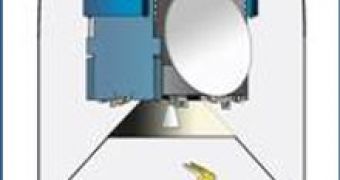While the American space agency is struggling to launch its ARES I-X suborbital test vehicle and the space shuttle Atlantis from the Kennedy Space Center (KSC), the European Space Agency (ESA) is pressing ahead with its scheduled Ariane 5 launch, which has now been confirmed to take place on Thursday, October 29. A launch-readiness review, conducted earlier today at the French Guiana-based Kourou Spaceport, has determined that the ninth launch of an Ariane vehicle for 2009 is a “go.”
As the spacecraft passed the readiness review, it will be transported out of the Final Assembly Building (FAB) to the ELA-3 launch zone, from where it will blast off just hours later. The launch window opens on October 29 at 5:00 pm local time, and lasts for about 90 minutes. The new Ariane 5 heavy-lift delivery system carries the NSS-12 and THOR 6 satellite payloads, both belonging to commercial partners. The rocket has an outstanding record of successful launches, and this accomplishment has made a lot of companies trust their communications satellites to Ariane 5's customizable cargo bays.
With the new flight, the rocket will lift a combined weight of more than 9,515 kilograms. Of this, the two spacecraft it carries weigh in at about 8,700 kilograms, with the rest of the weight being generated by the dual-passenger dispenser system on the rocket. This system ensures that the two satellites are being ejected in the correct sequence and at the correct time, so that each of them gets inserted into its designated orbit. The satellite integration hardware also makes for a small part of the overall weight.
NSS-12 is a US-built relay platform, designed and constructed by Space Systems/Loral. It weighs in at about 5,700 kilograms, and is scheduled to be released first of the two satellites, at around 26 minutes and 36 seconds into the flight. The instrument will be inserted in a geostationary orbit of 57 degrees East. Its 48 active Ku-band transponders and 40 C-band transponders will ensure direct-to-home television for Europe, the Middle East, Africa, Asia and Australia.
On the second position in the payload stack is the THOR 6 satellite, launched for Telenor Satellite Broadcasting AS, a subsidiary of the Norwegian operator Telenor. Weighing in at about 3,000 kilograms, the instrument was built for the Norwegian company by Thales Alenia Space, one of the best regarded private firms having to do with space technology in the world. The 36 Ku-band transponders aboard THOR 6 will provide direct-to-home services to Northern, Central and Eastern Europe, Space Fellowship reports.

 14 DAY TRIAL //
14 DAY TRIAL //